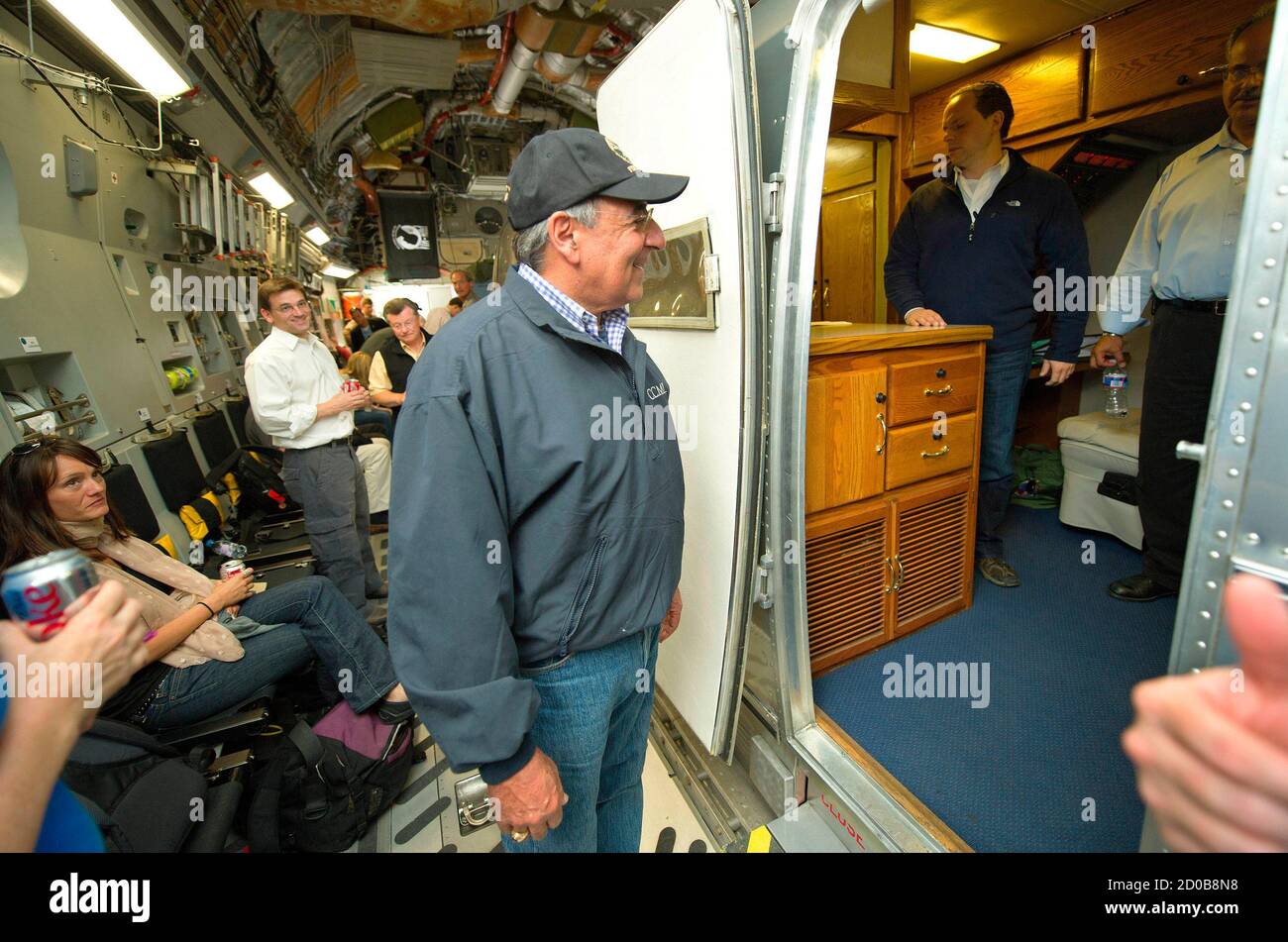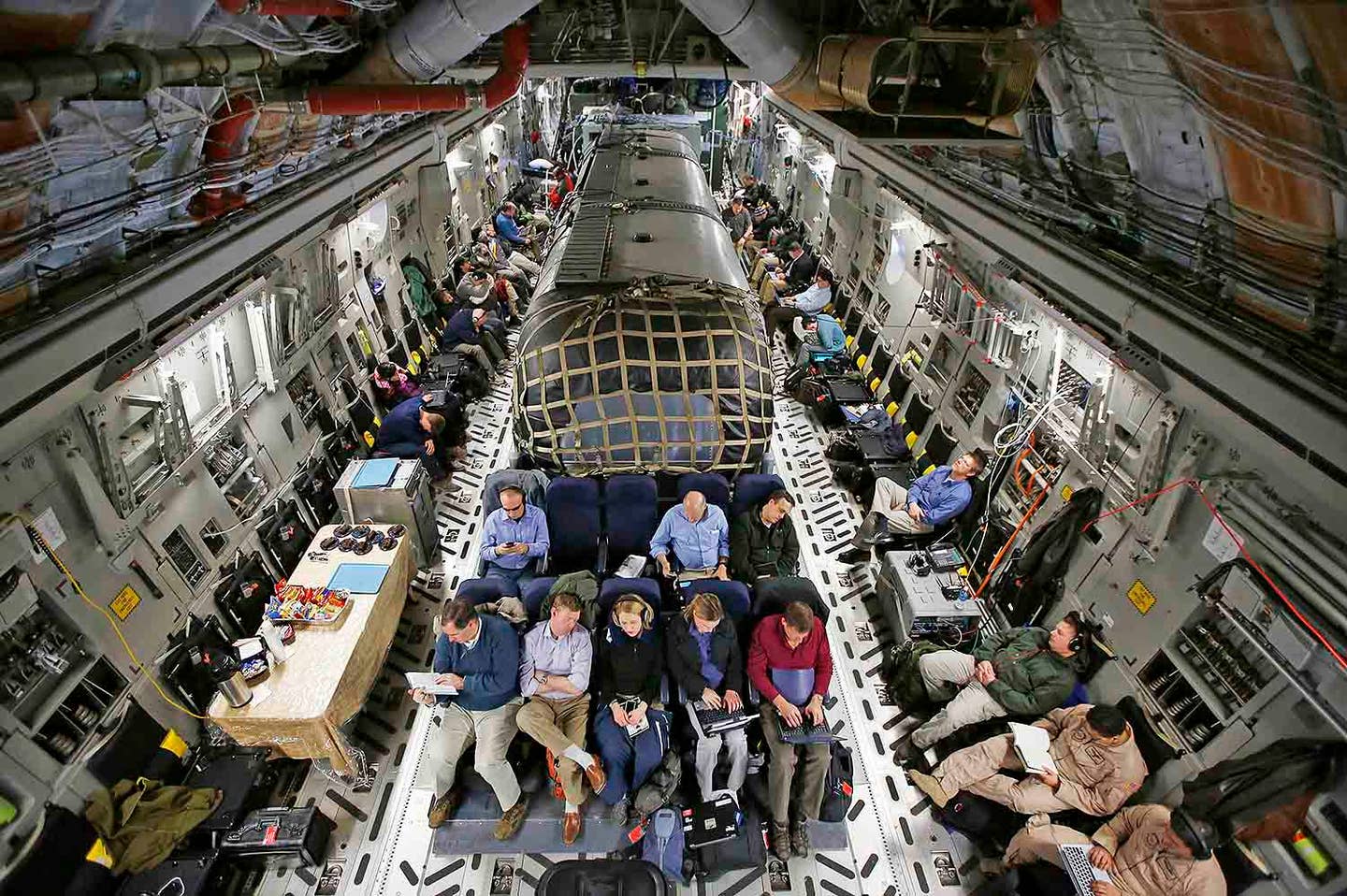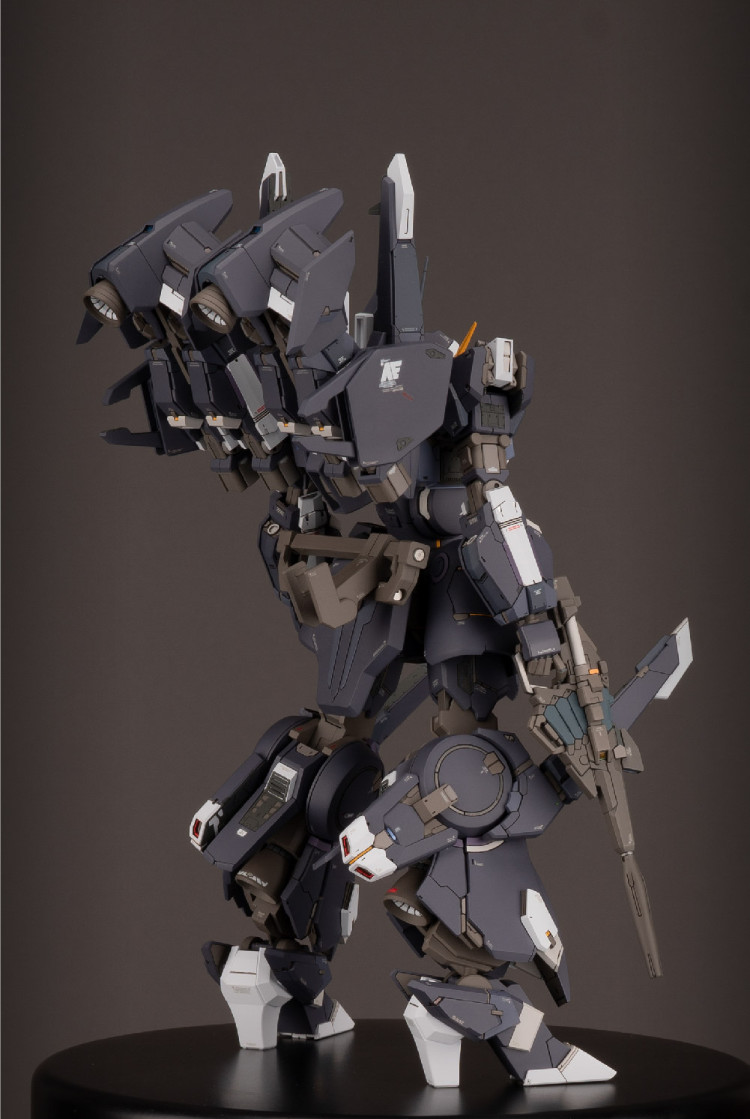Military Silver Bullet - These systems could fit on C-130s, KC-135s, KC-10s, and C-17s and could be linked together. The first cost for the initial four SLIPs and one SLICC was said to have grown to nearly $5M, with the first SLICC, which includes a "comfort" capsule and a "conference capsule" that can be mated together, costing nearly three million by itself.
The four SLIPs, which consist of just four chairs and a table area, would cost an incredible $415K each, or over $100k a seat. Their progress was noted and in 2016 the Joint Lightweight Ammunition Integrated Product Team (JLAIPT) was stood up by the U.S.
Military Silver Bullet

Army, the U.K. Ministry of Defense and the U.S. Marine Corps to collaborate in developing polymer cased ammunition. Lieutenant Colonel Brian Wisneski (USMC) is deputy program manager for MCSC's PM Ammunition. He says the polymer-cased ammunition produced by Nammo-MAC is approximately 1.2 ounces lighter per round than standard .50 caliber ammo, about a 23% weight reduction.
"The ROCC will replace legacy Silver Bullet Modules, which are modified Airstream trailers that the USG has certified for transportation on mobility aircraft as cargo only. The project sponsor is Air Mobility Command. The acquirer is C-17 Systems Program Office (SPO), which is part of the Air Force Life Cycle Management Center (AFLCMC) Mobility Directorate.End user customers of the ROCC are senior leaders of the US Department of Defense and their travel teams.Other USG agencies such the State Department may also use the ROCC. Supporting agencies include the Air Force Research Laboratory (AFRL) and the Air Transportation Test Loading Agency (ATTLA).The planned operating site for ROCC is at Joint Base Andrews, MD, and the planned depot maintenance site is at Wright Patterson AFB, OH. "
PM Ammunition is undertaking environmental/durability testing of the plastic cases as well as fire testing. So far, they appear to be as robust as brass casings in shipping, storage and life cycle scenarios “There really aren’t differences per se between brass and polymer cases,” Wisneski asserts.
"We've found nothing concerning." A 36 foot Airstream trailer was used as a starting point, with the trailer being turned into a three sectioned pod mounted on 12 foot long cargo pallets. The Airstream's wheels, towing system, fuel tanks, and environmental systems were stripped and its shell was heavily insulated to work as something akin to a mobile SCIF.
An arsenal of communications tech was integrated into the pod as well. The very same advances that will save lives on the battlefield have huge potential to save civilian lives too. It could save a child in a car accident who is heavily bleeding in small town, USA, save commuters who were attacked by a terrorist with a nerve agent in the subway in NYC, save church group volunteers on a humanitarian mission in South America from contracting Malaria after a hurricane... to name just a few examples.
“We can trade that weight off for other gear or another few Marines on an aircraft,” Col. Wisneski asserts. The savings could also be realized as range and fuel consumption positives for a variety of platforms.

The Marines' Light Armored Vehicle (LAV-25) for example would save 200-300 pounds depending on loadout with polymer .50 cal rounds according to Wisneski. The standard brass cartridges that incase rounds today have been in use in a similar format since before the 1898 Spanish-American War.
They remain effective but the miliary began to look at casing different caliber rounds in polymer material as far back as the 1950s. The polymers used for ammunition casing then, and now, are essentially synthetic plastics with different proprietary formulations.
In January 2020, Marine Corps Systems Command (MCSC) awarded a little-known Mississippi-based firm, Nammo-MAC LLC, a nearly $10 million small-batch production contract to make polymer cased .50 caliber ammo for the M2. Last November, Marines with 1st Marine Division tested and assessed polymer ammunition during a limited user evaluation at Camp Pendleton, CA.
Significant testing remains before scaling to full production and there are questions about cost at scale. Col. Wisneski, who has a career background in ammunition logistics in the USMC as an enlisted rating and an officer, opines that ammunition manufacturing is “black magic” with many variables.
The small batch run of ammo that MCSC has thus far experimented with is more expensive than traditional .50 caliber ammunition. Every caliber of ammunition the U.S. military shoots has at least one thing in common - a brass/metal casing.
New polymer .50 caliber machine gun casings now testing with the Marine Corps hold the promise of lighter weight, recycled material and less wear and tear on weapons. "The program began under General Duncan McNabb's tenure as commander of Air Mobility Command, a part of the Air Force that is responsible for air transport. General McNabb originally sought ten SLICCs and was involved in choosing the original color and material choices for the SLICC and SLIP leather, wood and carpet, which General Robert H. McMahon later changed at the tune of hundreds of thousands of dollars.
This material may not be published, broadcast, rewritten, or redistributed. ©2023 FOX News Network, LLC. All rights reserved. Quotes displayed in real-time or delayed by at least 15 minutes. Market data provided by Factset. Powered and implemented by FactSet Digital Solutions.
Legal Statement. Mutual Fund and ETF data provided by Refinitiv Lipper. This included multiple radio and satellite systems for unsecure and secure voice, data, and video teleconferencing. These systems "plug in" to the existing communications systems aboard a select number of C-17s—supposedly it can be flown aboard some KC-10s as well—via a set of umbilical cables.
There is a large "mechanical caboose" that brings up the rear of the palletized Silver Bullet system where the technology and controls that support the pod are held and where the pod's electronics are interfaced with the C-17.
The updated version of this enclosure is called the "Silver Eagle" and it can support communications at the very highest levels. The elite 21st Air Mobility Operations Squadron "Mobsters" mans the Silver Eagle system during deployments.
As to whether or not the USAF will be successful this time in replacing the Silver Bullets, we can't be sure. VIP travel is under a microscope in Washington DC once again, and the President himself isn't immune to the issue.
In general, the concept of public officials using government or government chartered aircraft, especially lavish ones, has become an increasingly hot button topic over the last couple of decades. Still, the Secretary of Defense in particular has to stay in contact at all times to serve in the role of the second half of the National Command Authority.
Should the President make the call to release nuclear weapons, the SecDef has to be there to give secondary approval, and having some sort of area and communications architecture conducive to that scenario is important while traveling.
This defensive suite includes multiple types of expendable decoys and the latest version of the laser-based Large Aircraft Infrared Countermeasure System (LAIRCM). This system uses staring missile launch detectors arrayed around the aircraft that alert the crew of an incoming missile via detection of the missile's infrared plume and cue a number of laser turrets positioned around the jet's fuselage to fire their blinding beams into the missile's infrared seeker.

From my 11 years in the military, I can tell you that in boot camp when someone over heats on a run and passes out the medics will pull their pants down and take a core temp in the rectum.
If you've seen freeze-dried coffee, then it is a similar concept... except this is blood with the water freeze-dried out to produce dry plasma and clotting protein-rich, stable, genuinely life-saving powder. A dose of this new amazing innovation can literally mean the difference between life and death.
Experiments with polymer-cased rounds in the 1980s and early 2000s showed potential but the technology was not yet mature enough to warrant evaluation for broad acquisition. However, defense suppliers like Textron txt and True Velocity kept developing different polymer casings and round types.
The cost alone to reupholster the seats on the first SLIP is about $21,000 – one estimate of the total cost of wood and leather changes to all the first four SLIPs (16 chairs total) was about $113,000.
The cost was so appalling to General Kenneth Merchant that he wrote, “How'd we get to $113K for 4 pallets? Pls tell me this is for all 4 pallets…I could carpet and upholster a couple of houses for $113K…” (ellipses in original)
Outside of the pods, in the aircraft's cavernous cargo hold, life goes on for aids and other passengers, with the Silver Bullet acting as an executive cocoon of sorts. Because they are not certified by the FAA, occupants can't hang out inside of them during takeoff or landing.
During those terminal operations they buckle into a seat just like everyone else but during cruise they have no real reason to leave as the pods even have oxygen at the ready for an emergency decompression situation and a direct line to the cockpit.

Sarin, VX, Soman and Tabun are all known chemical warfare nerve agent weapons. Even in a very tiny amount, nerve agents are extremely deadly. These horrible, toxic weapons can be odorless and colorless, providing very little warning of the attack before symptoms start to manifest.
The likelihood of survival, the side effects and speed with which symptoms appear varies based on factors like type of agent, exposure method and exposure duration. Secretary of Defense Mattis just visited Afghanistan, where he had a very unwelcoming arrival thanks to RPG and mortar slinging Taliban insurgents.
The Pentagon's top civilian leader took a C-17 into the war torn country for good reason. The C-17 can maneuver hard within the tight confines of an airfield's perimeter to execute tactical approaches and departures, and most importantly, they are equipped with an advanced countermeasures suite.
Thanks to a new law and a dedicated team-up between the Department of Defense and FDA, there is good reason to hope that life-saving solutions like these will now reach military personnel at an unprecedented rate.
With this new autoinjector, troops simply need to take it out when they have been exposed. Atropine is one of the most commonly used drugs for nerve agent poisoning. Loaded with an atropine dose, the user simply applies it to a thigh muscle and it will rapidly inject.
Simple, fast, potentially life-saving treatment within moments. The product will most likely continue to evolve, but the U.S. military has already had excellent results from using the FDP in real battlefield conditions. The Army beginning testing in 2012 and the Marine Corps more recently.
MARSOC first used FDP in Africa about a year ago and reported strong performance. The Secretary of Defense's usual ride, the E-4B National Airborne Operations Center (NAOC) doesn't benefit from an elaborate infrared countermeasures suite and these aging aircraft have limited availability.

But that doesn't mean the Pentagon's head honcho has to sit in an airliner seat bolted down in the C-17's cargo hold the entire flight into a war zone. Instead he gets to use one of the Air Force's two customized airstream VIP "Command and Control" (C2) pods aptly nicknamed "Silver Bullets."
The “world class” emphasis entailed the costly aesthetic redesign of the interior of an already existing system known as Steel Eagle. After the first SLIP was procured, General McMahon expressed dissatisfaction with the color of the seat leather and type of wood used.
He directed that the leather be reupholstered from brown to Air Force blue leather and to replace the wood originally used to cherry. The Silver Bullets came out of a USAF Research Lab initiative dating back to around 1990. The idea was to get something modular that could provide a VVIP/distinguished guest the privacy required to discuss sensitive matters, while also being comfortable enough for them to relax or get work done while en route to a destination.
Above all else they had to offer the connectivity required to provide officials with multiple forms of communications to the outside world. In addition, these "pods" of sorts had to be relatively affordable, so starting from scratch really didn't make sense.
"It's plastic and everybody looks at plastic as a bad thing," Wisneski acknowledges. “We’ve asked, how could we use it with 3D printing if we need to make a repair part and we have 600 rounds of polymer .50 caliber that we can harvest?”
A standard ammunition can lid opens up and to the left until vertical. The first round of brass ammo comes out on the opposite [right] side. At the Evaluation the Marine found that the first round of polymer ammunition came out on the left side of the can, next to the lid Wisneski relates.
The gunner had to reach across the [gun] chamber moving his hand from him another 8 to 10 inches to load the weapon. One of the units was originally based at Yokota Air Base in Japan but now they are both based at McGuire AFB in New Jersey and are maintained by the 605th Air Maintenance Squadron and operated by the 621st Air Mobility Operations Squadron.
A crew of three accompanies each pod, which includes two stewards and a communications specialist to help operate the pod's technical systems. While offering no specific projection and pointing out that military and commercial ammunition costs are cyclical, Wisneski says, “We believe the [mass] production prices will come down to be near the cost of brass [casings] right now.”
Author's note for correction: Silver Bullet operations have moved to Andrews AFB. The pods are maintained by the 89th Maintenance Group and the Steel Eagle comms unit is maintained by the 89th Communications Squadron. In flight support is provided by both 99th and 1st Airlift Squadrons.
No C-17s are assigned to Andrews, so the aircraft are still pulled from bases with properly equipped aircraft. Considering that their mission is VIP transport, moving the pods to Andrews AFB makes a lot of sense.
army silver bullet, silver bullet military term, military silver bullet medical device, silver bullet thermometer, silver bullet military meaning, marine silver bullet, silver bullet military slang, silver bullet army medic
